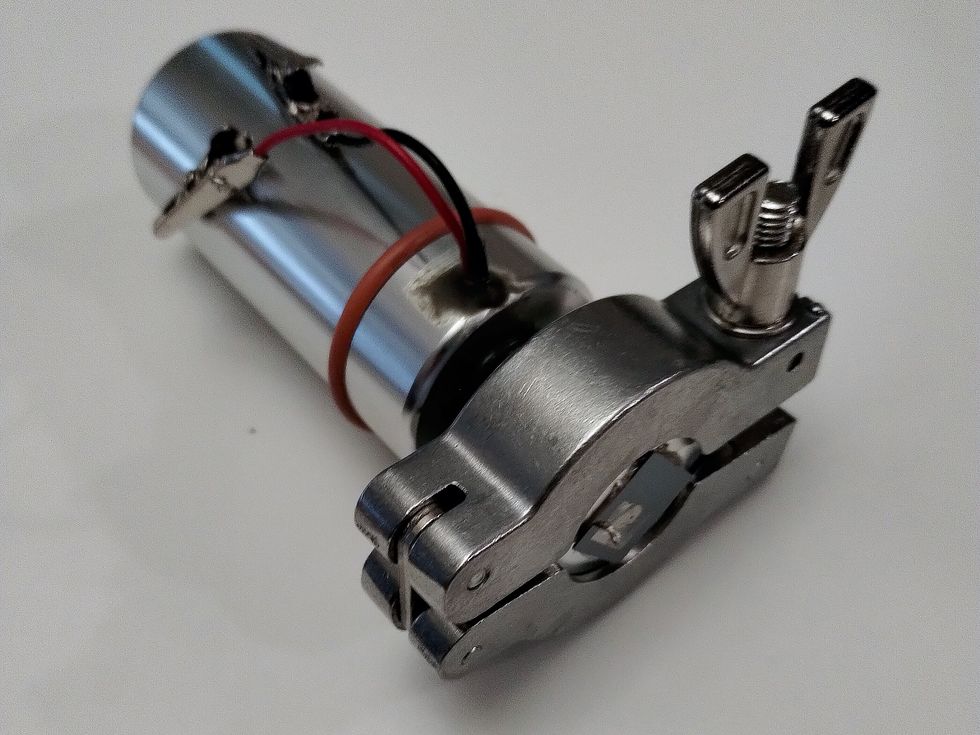Science
Startup Aims for Breakthrough with New Nanotip Satellite Thruster

A startup named Orbital Arc has announced plans to develop a spacecraft thruster that promises to be up to 40 percent more efficient than existing models. This innovative thruster would not only cost less than a thousandth of traditional fuels but also weigh significantly less—approximately one-eighth the mass of current systems. The company’s founder, Jonathan Huffman, believes this technology could revolutionize satellite operations and interplanetary missions.
The design aims to miniaturize thruster technology, enabling a device that is just an inch wide yet capable of producing the same thrust as larger, heavier systems. Huffman states, “We can go from a thruster that’s about a few inches across and several kilograms to a thruster on a chip that’s about an inch across and has the same thrust output.” The potential applications for this technology could lead to considerable cost savings for satellite operators, especially those looking to navigate around space debris or those involved in ambitious missions to distant planets.
Innovative Technology for Space Propulsion
Traditional thrusters work by generating and expelling plasma, pushing spacecraft in the opposite direction. Most commonly, Hall thrusters utilize a magnetic field to trap electrons, which collide with noble gases like xenon to create plasma. In contrast, Orbital Arc’s breakthrough design leverages a fuel called naphthalene, known for its use in mothballs, and utilizes MEMS microfabrication techniques to create tiny, efficient thrusters.
Huffman, who was previously a biotech consultant, stumbled upon this idea while developing fictitious technology for a video game. He recognized limitations in existing ion thrusters, particularly that increasing thrust typically requires heavier equipment. “There’s a certain point at which adding more mass to the thruster negates all of the benefits you can get from extra thrust,” he explains. His background in biology provided him with insights into nanoscale technology, crucial for advancing propulsion design.
Orbital Arc’s thruster features a chip embedded with millions of micrometer-scale tips that create a powerful electric field. As naphthalene flows through the chip, it interacts with these charged tips, becoming polarized and eventually releasing electrons. This process generates ions that are expelled into space, creating thrust without the energy losses associated with traditional plasma systems.
Recent tests have demonstrated that just six of Orbital Arc’s tips can produce approximately three times more ion current than an array of 320,000 tips developed at MIT. This efficiency could lead to a 30 to 40 percent improvement in power consumption compared to conventional thrusters.
Next Steps Towards Commercialization
Currently, the thruster remains in the prototype stage, with each chip containing only six tips. Fabrication occurs at Oak Ridge National Laboratory, but Huffman plans to scale up production in a university lab soon. The next phase involves assembling a complete thruster around the chip, which he describes as straightforward: “It’s a valve, it’s a few wires, it’s a few structural components.”
Huffman is optimistic about having a market-ready product within the next two years, targeting small teams and research groups as initial customers. Some potential clients may be willing to take risks on this untested technology due to its expected cost efficiency. Jonathan MacArthur, a postdoctoral researcher at Princeton University, expresses caution, stating that clients typically rely on proven data and historical performance when selecting propulsion systems.
Despite skepticism, there is a growing interest in innovative propulsion technologies, particularly among smaller missions. Oliver Jia-Richards, a researcher at the University of Michigan, suggests that recent successes of other startups in the electric propulsion field may encourage customers to experiment with new systems.
Huffman envisions a future where his thrusters enable significant advancements in space missions. By reducing dry mass, he argues, missions could transition from one-way trips to Mars to two-way human-rated missions to Jupiter. With aspirations to develop an ultra-light spacecraft bus, Orbital Arc is poised to push the boundaries of current space technology, potentially transforming how we explore the cosmos.
-

 Science3 weeks ago
Science3 weeks agoInterstellar Object 3I/ATLAS Emits Unique Metal Alloy, Says Scientist
-

 Science3 weeks ago
Science3 weeks agoResearchers Achieve Fastest Genome Sequencing in Under Four Hours
-

 Politics3 weeks ago
Politics3 weeks agoAfghan Refugee Detained by ICE After Asylum Hearing in New York
-

 Business3 weeks ago
Business3 weeks agoIconic Sand Dollar Social Club Listed for $3 Million in Folly Beach
-

 Health3 weeks ago
Health3 weeks agoPeptilogics Secures $78 Million to Combat Prosthetic Joint Infections
-

 Lifestyle3 weeks ago
Lifestyle3 weeks agoJump for Good: San Clemente Pier Fundraiser Allows Legal Leaps
-

 Business3 weeks ago
Business3 weeks agoMcEwen Inc. Secures Tartan Lake Gold Mine Through Acquisition
-

 Science3 weeks ago
Science3 weeks agoMars Observed: Detailed Imaging Reveals Dust Avalanche Dynamics
-

 Health3 weeks ago
Health3 weeks agoResearcher Uncovers Zika Virus Pathway to Placenta Using Nanotubes
-

 World3 weeks ago
World3 weeks agoUS Passport Ranks Drop Out of Top 10 for First Time Ever
-

 Entertainment3 weeks ago
Entertainment3 weeks agoJennifer Lopez Addresses A-Rod Split in Candid Interview
-

 Business3 weeks ago
Business3 weeks agoSan Jose High-Rise Faces Foreclosure Over $182.5 Million Loan









